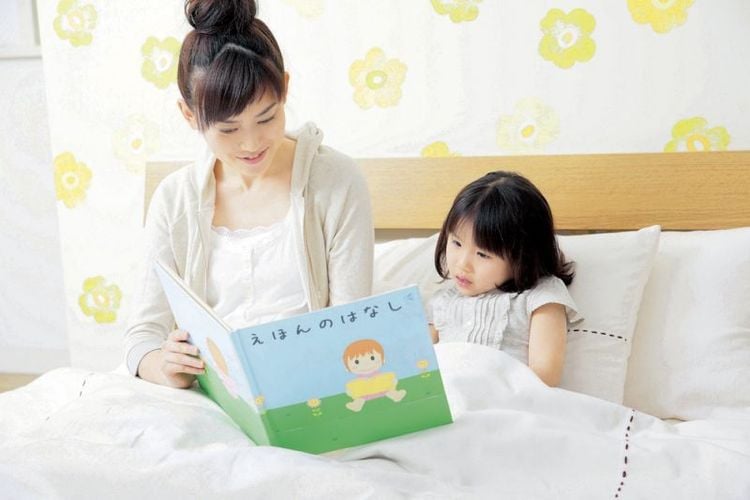This is an automatically translated article.
Posted by Master Nguyen Thi Yen - Pediatric Speech Therapist - Vinmec Time City International HospitalCommunicating with your child is one of the most enjoyable and rewarding parts of a parent's parenting journey. Children learn by absorbing information naturally through everyday interactions and experiences, not only with their parents but also with other family members, friends, and teachers at school. At the age of 3-5 years, children have gone to preschool, so language skills are an extremely important part of learning in class.
1. Stage from 3 to 4 years old
1.1. Children's language-communication characteristics In addition to learning to say animals in class or in the environment, children will learn a lot of new words by listening to their parents and other adults talk in different contexts. . Besides, children also learn from hearing and learning new words in kindergarten. Children's comprehension is still much better than they can say. At this stage:
Children learn and use more linking words such as: "and", "with",... For example, children with mother play together,... Children recognize more numbers. Children recognize and name groups of things, for example: vegetables, animals, means of transport, ... Children can name basic emotions such as: happy, sad, angry, ... Children begin to use more complex sentences. For example: the car went too fast and fell,... Children use words that indicate possession such as: my hat, mother's shoes, .. Children will also mention: yesterday, today, earlier. , now,... For example: a while ago, I ate porridge,... Children use correct personal pronouns in communication such as: child, em, grandchild,... Children begin to tell sentences themed stories but still need reminders to continue the story such as: "what happened?", "what did he do then?",... When almost 4 years old, children will start learning talk about what they think or start a story by asking, for example: “Guess what's in here?”,... By age 4, most adults will understand a child's words, although , some children may not say certain sounds correctly. Children will understand and follow instructions in more than two steps in familiar contexts. For example: “I go up to the 2nd floor, open the door to my room, take my phone and bring it down here”,... Children understand questions or complicated explanations for what is happening in front of them. . For example: “This pen has a tip that is too small to stand on its own”,... Children recognize and begin to be able to compare two things. For example: one car is bigger than another,... Children begin to be able to negotiate with others. For example: after you finish eating, let me watch TV, etc. By the age of 4, children can explain why they want something. For example, your child wants to use a black pen to color the wheel,... Children can start to act as a character while playing. For example: “I am the Dinosaur. Graooo...” SEE MORE: Teaching your child to speak: Knowledge to know

Cha mẹ cần lắng nghe và dạy con học nói theo từng giai đoạn độ tuổi
1.2. What can parents or caregivers do? Reading with your child is one of the best ways to help your child learn to speak a language. You can take your child to a bookstore and help him choose a book to read with you at home. While reading, you can ask a few guiding questions or prompts to help your child think about how to solve the story situation. For example: “It's getting dark, what do you have to do to get home now?”...
Parents, please respect your child's interests and learning styles. Some children like to sit quietly and read books, some like to be active. Find out how best to teach your child. Besides, parents can also play role-playing games: Participating in role-playing games in specific contexts will help children easily visualize the emotions of each character. Children will learn how to behave and choose appropriate sentences for each character to communicate.
Explain based on situations: for each situation, try to stop for a few minutes and explain to your child what happened. This helps children experience handling situations and helps them learn and develop language for presentation and persuasion.
In addition, parents should play and discuss play ideas together: children are an important member of play, so there is no reason why children should not be involved in the development of play ideas. This will help stimulate children's creativity, logical thinking and expressive language.
MORE: Language development for children through food
2. Stage from 4-5 years old
2.1. Language - communication characteristics of children At this stage, the baby's learning to speak seems to have been completed. Accordingly:
The child is interested and able to maintain communication with others. Children love to play and explore many different environments: at the playground, in the park, etc. Children can maintain an activity or a theme of play for about 15 minutes. Children use more conjunctions, for example: "when I go to the park, please let me take the car". Children can express their feelings and emotions. For example: I'm sad, I don't know, I'm hurt,... Children understand concepts: above, below, in the middle, next to,... Children know how to put small sentences together to make more complex sentences. Children begin to understand the figurative meaning of sentences. Children learn to ask questions when they do not understand. For example: “where is the ball, mom?” Children follow directions more than two steps, even in new contexts. For example, go to the gate and give the ticket to the conductor, then let's go to the zoo together." Children may retell the story on their own, sometimes omitting information or telling the story in the wrong order. Children know how to take turns talking in a small group. Children may be able to tell "fake stories" to make others laugh. Example: “I just hit a huge Dinosaur.” SEE ALSO: How to teach language to children?

Dạy con học nói giai đoạn 4-5 tuổi dễ dàng hơn các giai đoạn trước
2.2. What can parents or caregivers do? To help children learn to speak better, avoid repeating words or slurred speech, etc., parents should talk to their children about daily activities. Spend about 30 minutes a day with your children to talk about their day: what activities did you have, what activities did you like the most, why you like that activity, what you like to do tomorrow, .. With just such simple questions, you both help your child develop the ability to tell stories and help them develop thinking and language to express their ideas.
Talk to your child about the books he reads with you. Each book will give your child a certain impression. Discussing the "common book" will help your child learn how to express and defend his or her own, as well as accept the ideas and differences of others. Accepting that others are not like you will be a very important skill to help your child integrate better with friends in class or at play.
Talk about TV shows or videos that your child has watched with you. Discuss with your child what is interesting about the program, what do you like about that program, and what other programs do you like. You can also suggest a few more programs that are appropriate for your child's age and interests. It's important to always watch and discuss it with your child. In addition, parents should:
Put books in a place where children can read them themselves. Record and create an album with your child to store pictures and experiences of your child, his family and friends. Plan an interesting activity with your child. For example, invite your child's friends over to play or have a picnic, etc. The more children are involved in conversations and interactions, the more they will learn. Reading, singing, playing games or simply talking are opportunities for children to increase their vocabulary and develop their listening skills better. These are extremely helpful to children when they go to school and develop friendships later.
For children to be healthy and develop well, it is necessary to have a nutritious diet in terms of quantity and quality balance. If children are not provided with adequate and balanced nutrients, it will lead to diseases of excess or lack of nutrients, which adversely affect the comprehensive development of children in terms of physical, mental and motor skills.
Children who do not eat properly are at risk of micro-mineral deficiency causing anorexia, growth retardation, malabsorption,... If they notice the above signs, parents should supplement their children with products. The supplement contains lysine, essential micro-minerals and vitamins such as zinc, chromium, selenium, and B vitamins to help fully meet the nutritional needs of children. At the same time, these essential vitamins also support digestion, enhance nutrient absorption, help improve anorexia, and help children eat well.
Parents can learn more:
Signs of zinc deficiency in children
Micronutrient deficiency and failure to gain weight in children
Please regularly visit Vinmec.com website and update useful information to take care of your child. Take care of the baby and the whole family.













